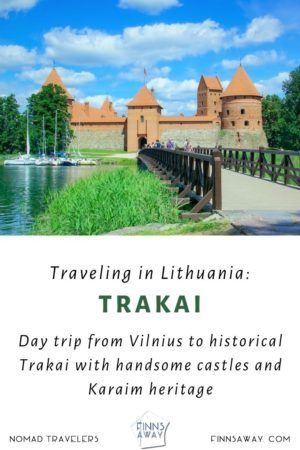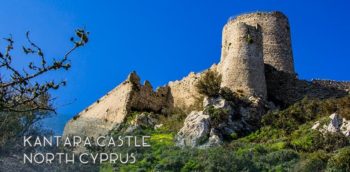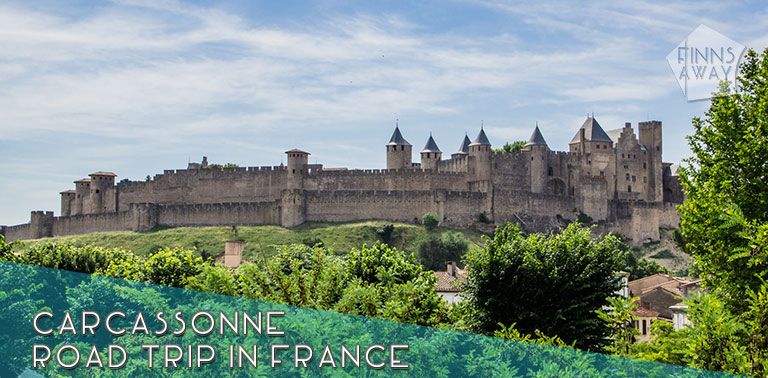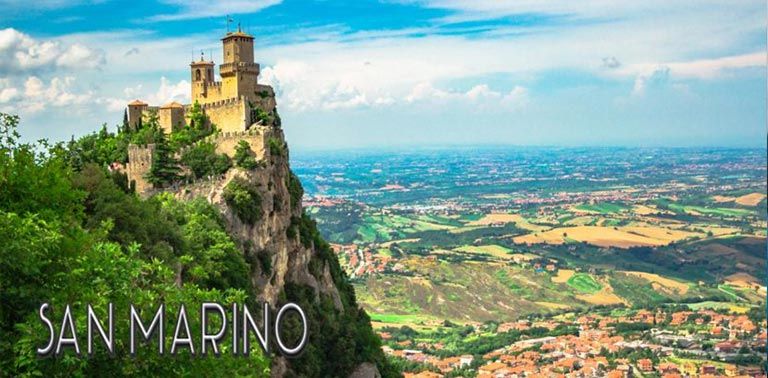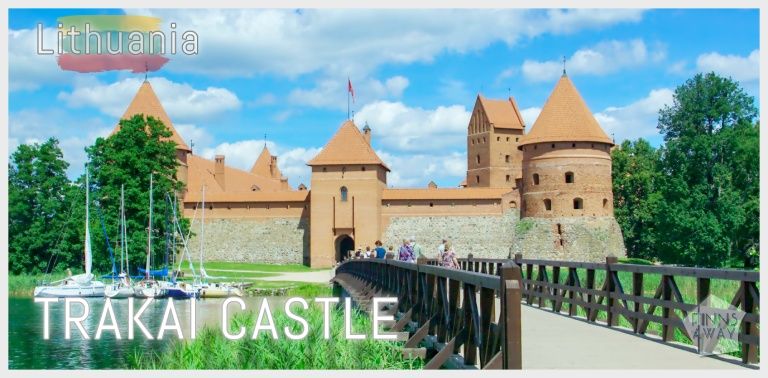
Beautiful Trakai in Lithuania
A small historical town on a peninsula surrounded by a lake and a nature park, with stunning buildings like a castle on an island. Sounds interesting, doesn’t it? This town would be Trakai in south-eastern Lithuania, just 25 km from the capital Vilnius, by Lake Galve. Even if Trakai is one of the most popular tourist destinations in the country, it’s still not overly touristy, so walking around and getting to know this charming area is a pleasure. Trakai can be easily visited from Vilnius, either on a day trip or staying overnight. In this post we introduce Trakai, provide tips on how to get there by public transportation and how to plan your visit, and tell about the history of this interesting town, once an administrative capital of Lithuania.
Trakai Island Castle
The reconstructed Island Castle of Trakai, also known as Salos Castle, is the main attraction of Trakai, and undeniably a majestic sight, towering on a small island close to the mainland. As the castle was badly ruined before the massive reconstructions, the current red-brick structure is largely newly-built. The castle includes two courtyards, a central palace a high keep and a chapel with arched ceilings. The castle was built to be an impenetrable fortress, and the architecture style was Gothic with some Romanesque elements. The castle was turned into a museum in 1962, and there are both permanent and temporary exhibitions. The island castle also is a venue for several festivals, concerts and other events every year.
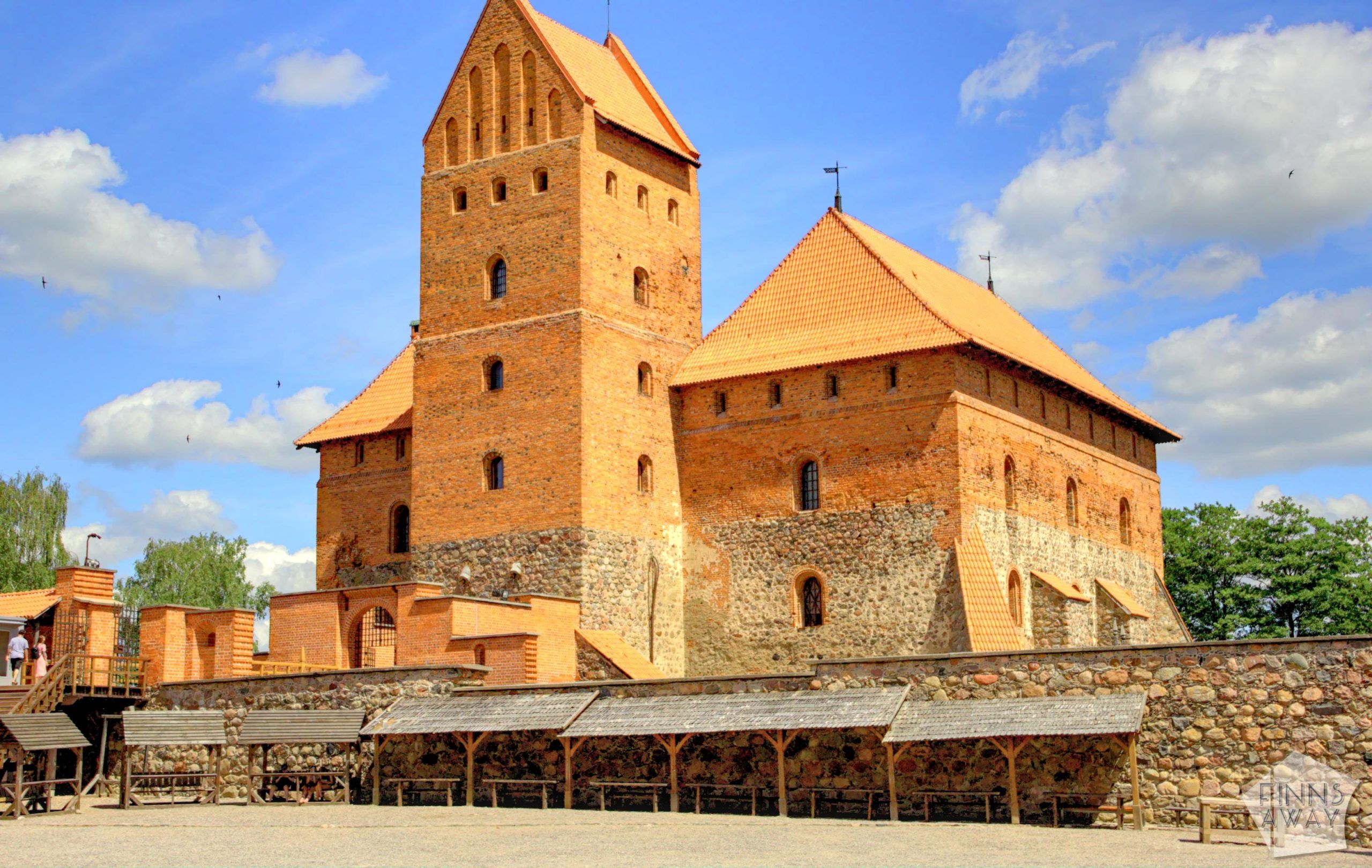
Trakai Island Castle is accessed along two wooden bridges from the peninsula, and visitors can enter the island and walk around the castle, as well as to take a peek of the first courtyard, for free. The admission to get inside the castle walls, to Trakai Castle Museum, are 8 € for adults and 4 € for kids, students and seniors. There are guided excursions available in Lithuanian, English, Polish, Russian and German. The other castle on the mainland, Trakai Peninsula Castle, just a few hundred meters from the Island Castle, is only partly restored and mainly in a ruined state. It used to have seven towers connected with a 10-meter high wall and surrounded with a moat.
Trakai Historical Nature Park
Trakai Historical Nature Park was founded in 1991 and consists of the historical town of Trakai and the surrounding lakes, forests and villages. The total area of the park that preserves the cultural heritage and natural environs of the region, is 82 square kilometres. The nature of the area, with hills, ridges, lakes and marshlands, was formed by glaciers during the ice age, and holds a large variety of flora and fauna. Most of the visitors only focus on the Trakai town and castles, but the surrounding nature park would make a great destination especially for nature-lovers. If you are only on a short day trip, at least consider walking to the Trakai castles along the eastern shore of the island, where a walking path follows the coastline. From the bus station it’s a relaxing 3 kilometre-long nature walk, with several possibilities to stop for a swim for example.
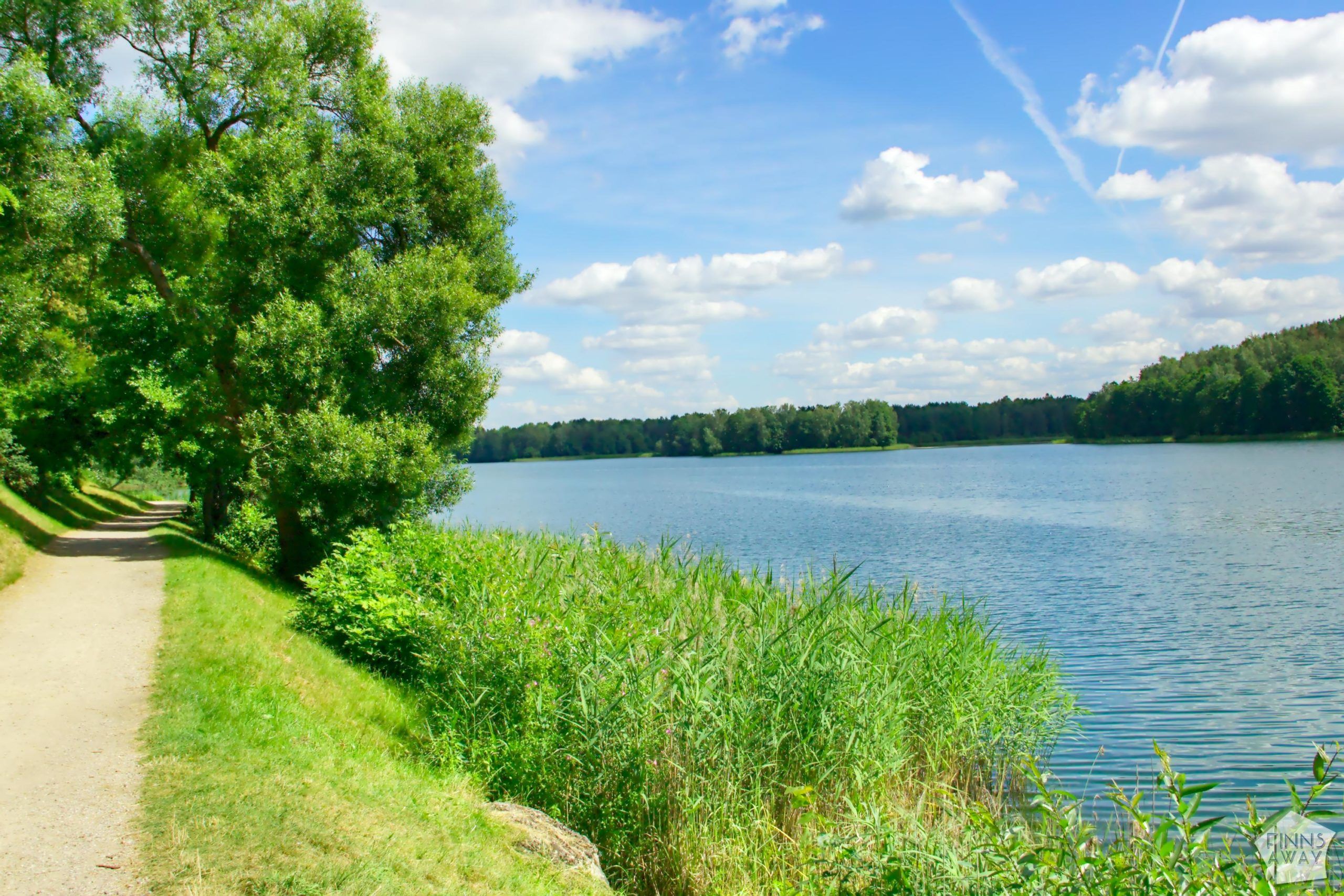
Karaim heritage and culture in Trakai
Trakai is home to a small Karaim community, an ethnic group that origins from Crimea. Karaims were brought to Trakai in the 14th century by Grand Duke Vitautas, to serve as warriors and servants. Karaims were placed between the town and the Island Castle and trusted with the castle’s protection. The main street that leads to the Island Castle today is lined with colourful wooden houses, that are typical for Karaims. These houses usually have three windows in the front; it’s believed that the first one is for God, the second for the host and the third one for guests. Many of the Karaims of Trakai can still speak Karaim language that derives from the Turkish language family, and have kept alive Karaim traditions and heritage. Trakai is a great place for getting to know also the Karaim cuisine – there are several restaurant offering traditional Karaim dishes like filled kybyn or chebureki pies.
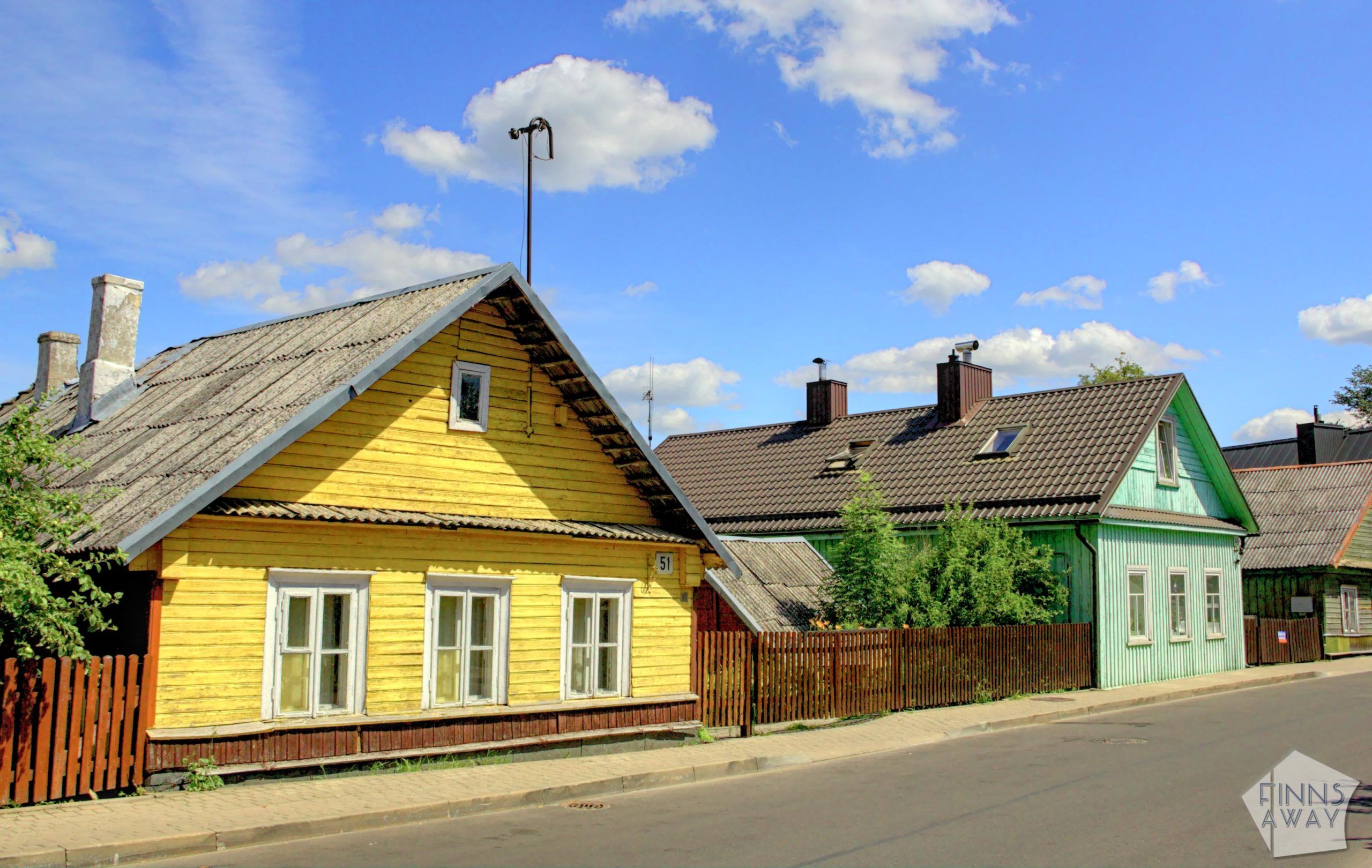
How to visit Trakai from Vilnius
To visit Trakai from Vilnius, there are several organized tours available, but it’s also super easy (and cheap) to arrange the trip yourself. Trakai can be reached by bus from the Vilnius bus station. The buses leave roughly every half an hour, and the trip takes around 45 minutes. Tickets (in August 2020) cost 2 € from the bus station in Vilnius to the bus station of Trakai, and can be bought either from a ticket office or from the driver when boarding. There is also a train connection between Vilnius and Trakai, with seven daily trains (one way tickets 1,80 €).
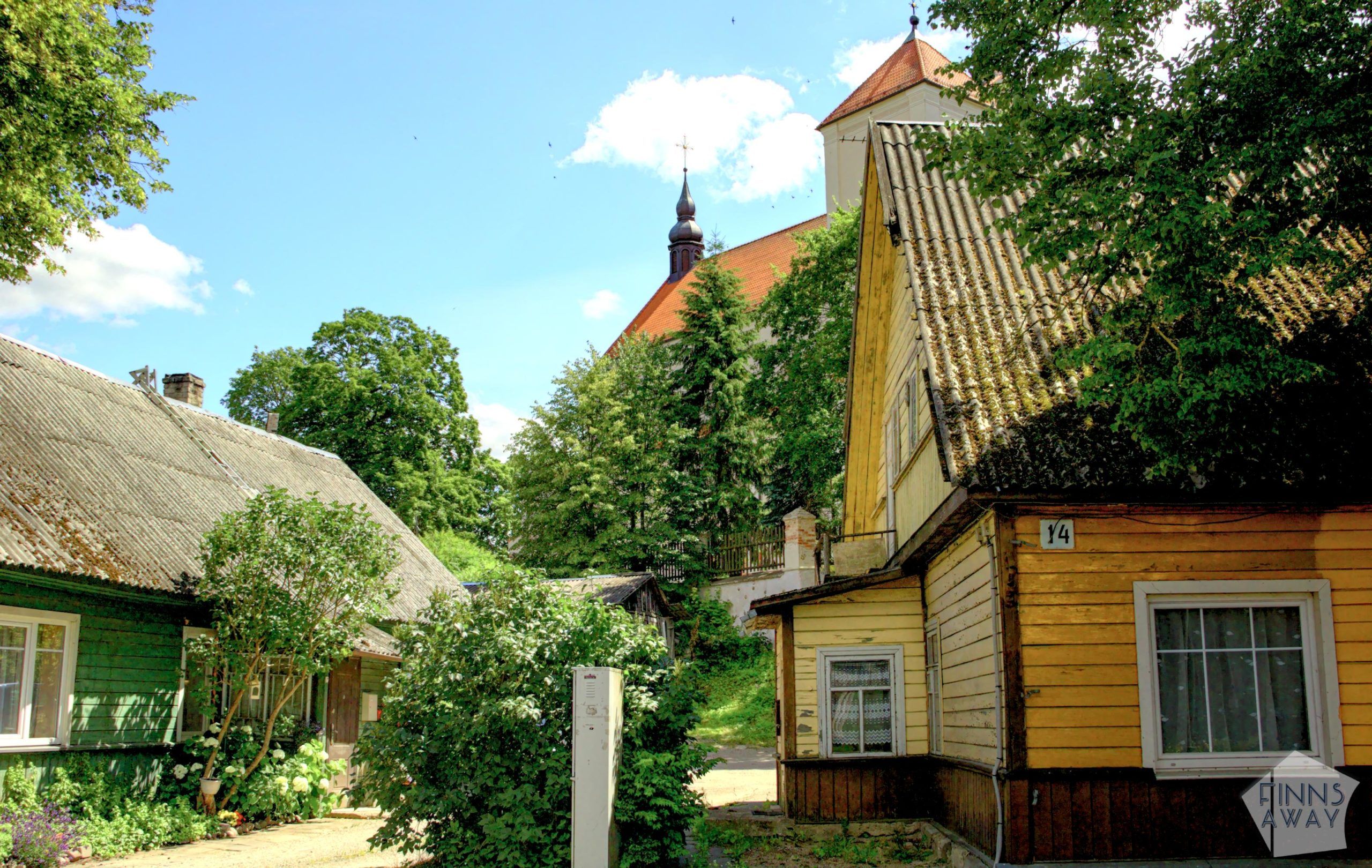
When in Trakai, the main draws are the castles, museums and the Karaim houses, but there are also a lot of outdoor activities available from boat trips to horseback riding and paragliding. There are nature walks and beaches, and of course a lot of restaurants and cafes. For staying overnight, there are some guest houses and hotels, as well as cottages by the lake. Check our for example the small Guest House Karaimu 13 that rents rooms in a rebuilt Karaim house, or the Boutique hotel style guest house Viva Trakai, that has great views to the Island Castle.
History of Trakai castles in a nutshell
- Old, wooden Trakai Castle and a unified defensive system was built in Senieji Trakai in early 14th century, under the orders of the Grand Dutchy of Lithuania.
- Dutchy of Trakai, lead by Kestutits, moved the town to the current location, and a new castle was built on the peninsula on mid 14th century (Peninsula Castle).
- Another castle was built on an island in Lake Galve soon after (Island Castle), and a village grew around the castles. The Island Castle became the residence of the Grand Duke Vitautas of Lithuania.
- The location of Trakai was protected by surrounding defensive systems, but the old wooden castle was raided by Teutonic nights several times. In early 15th century the wooden fortress was replaced by a stone-built castle.
- In 1409, Trakai town was granted city rights, and it developed quickly to a flourishing city, and the Great Hall of the Island Castle welcomed many honored guests.
- In late 16th century the town’s importance started to decline. The castles stayed as royal property, but were used as prisons.
- After the wars between Russia and Poland (1654-1667), the town was burned, both castles demolished and the era of prosperity ended.
- In 1929, the Polish authorities ordered reconstruction and restoration of the Trakai Island Castle.
The reconstruction of the upper castle and a high tower were completed in 1961 (by Soviet Union authorities). - Lithuanian authorities completed the works in the lower castle in the early 1990s.

